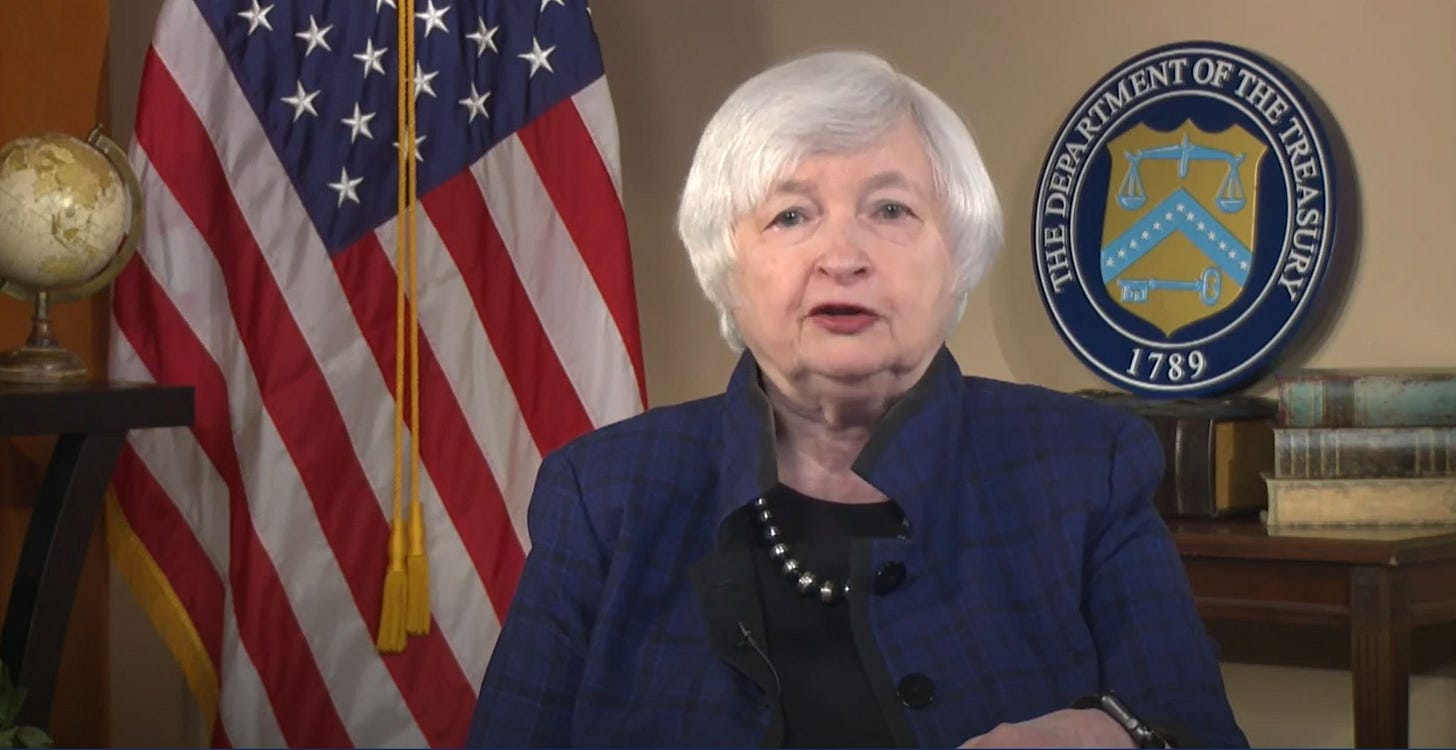Toward a new supply-side economics
Janet Yellen recently discussed "modern supply-side economics," a departure from traditional supply-side economics and Keynesian economics
U.S. Treasury Secretary Janet Yellen gave a good speech at the World Economic Forum’s online Davos Agenda meeting, which you can watch here and read here. In her speech, she discussed “modern supply-side economics” as the Biden administration’s economic growth strategy, in a departure from Keynesian economics and traditional supply-side economics.
While Keynesian economics focuses on bolstering demand and traditional supply-side economics emphasizes deregulation and tax cuts, “modern supply-side economics, in contrast, prioritizes labor supply, human capital, public infrastructure, R&D, and investments in a sustainable environment,” Yellen said.
This is a welcome change. Traditional supply-side economics, which was pioneered during the Reagan era, promised that if we just cut regulations and cut taxes, then economic growth would burst forth, and that hasn’t quite happened. Not having too much regulation or too high a tax burden are worthy goals in and of themselves, but they’re not an economic panacea. Tax cuts and deregulation alone aren’t going to make the economy more productive.
On the other hand, directly increasing the U.S.’ productive capacity will increase potential economic output. Some ways we can do this are investment in infrastructure, investment in education and training, investment in basic research that the private sector is unwilling to undertake on its own, and ensuring that we have a competitive economy that is not controlled by too few firms.
The inflation and shortages that we’re currently experiencing are a direct result of not paying enough attention to the supply side of the economy.
The Biden administration is aiming to bolster the supply side through its spending, though in some ways, it’s not ambitious enough, and they’re trying to pile more money on top of systems that are failing or likely to fail. For instance, the original Build Back Better legislation would have made community college free. But less than 40% of community college students earn a certificate or degree within six years of enrolling, and some employers are unlikely to hire community college graduates because they view it as a negative signal. Reform is better than throwing money at the problem. Community colleges need to provide higher-quality and more practical education.
The government spent almost $7 trillion in 2021—a mind-boggling amount. And there is still so much that our economy is missing. We have a dearth of basic research for new technology that can be commercialized; we’ve been free-riding off the invention of the internet and personal computer over the past 30 years. To address this, we need to make government-funded scientific research less bureaucratic, so that scientists aren’t spending half of their time writing grant applications. We also have a skills crisis; the reason we hire so many workers on H-1B visas is that employers don’t think Americans have the necessary skills to fill their jobs. And we have too few firms producing important products; if we had more chip-makers, then there wouldn’t be a chip shortage causing delays in car and computer production.
It’s good that the Biden administration is paying more attention to the supply side after long neglect by previous administrations. But they should think bigger and fundamentally reform systems that need not just more money, but also structural change.




